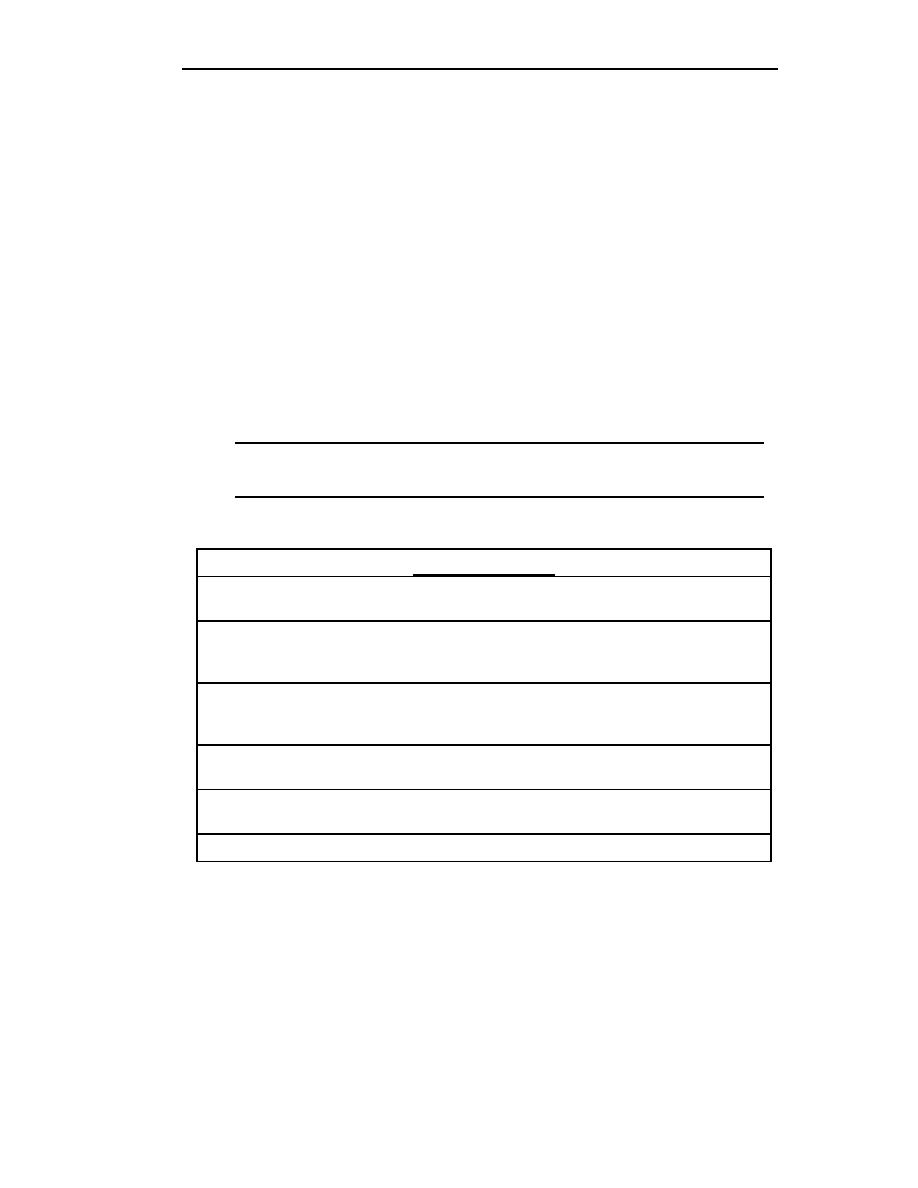
TC 9-62
1-92. A standard specification sheet usually has a brief description of the diode. Included
in this description is the type of diode, the major area of application, and any special
features. Of particular interest is the specific application for which the diode is suited. The
manufacturer also provides a drawing of the diode that gives dimensions, weight, and, if
appropriate, any ID marks. In addition to the above data, the following information is also
provided:
A static operating table (giving spot values of parameters under fixed
conditions).
A characteristic curve similar to the one in Figure 1-20 (showing how
parameters vary over the full operating range).
Diode ratings (which are the limiting values of operating conditions outside
which could cause diode damage).
1-93. Manufacturers specify these various diode operating parameters and characteristics
with "letter symbols" in accordance with fixed definitions. Table 1-1 is a list, by letter
symbol, of the major electrical characteristics for rectifier and signal diodes.
NOTE: The electrical characteristics (by letter symbols) for the other types of
diodes will be covered later.
Table 1-1. Major Electrical Characteristics for Rectifier and Signal Diodes
RECTIFIER DIODES
DC BLOCKING VOLTAGE [VR] - the maximum reverse DC voltage that
ƒ
will not cause breakdown.
AVERAGE FORWARD VOLTAGE DROP [VF (AV)] - the average forward
ƒ
voltage drop across the rectifier given at a specified forward current and
temperature.
AVERAGE RECTIFIER FORWARD CURRENT [IF (AV)] - the average
ƒ
rectified forward current at a specified temperature, usually at 60 Hz with a
resistive load.
AVERAGE REVERSE CURRENT [IR (AV)] - the average reverse current at
ƒ
a specified temperature, usually at 60 Hz.
PEAK SURGE CURRENT [ISURGE] - the peak current specified for a given
ƒ
number of cycles or portion of a cycle.
1-28
TC 9-62
23 June 2005



 Previous Page
Previous Page
